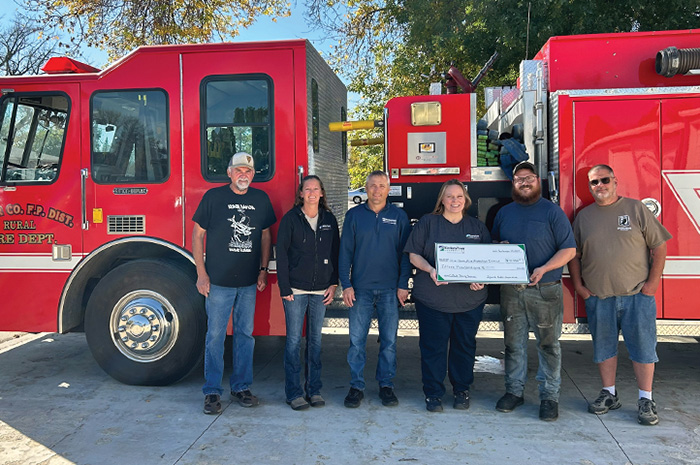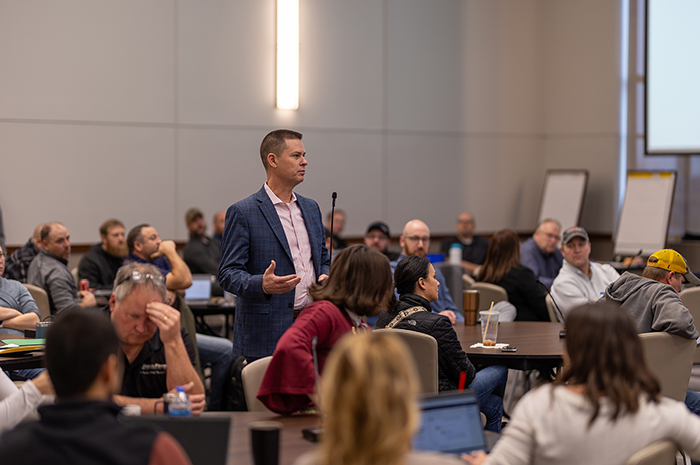A decade in review
Minnkota will celebrate 80 years of power generation and transmission in 2020, but the past decade has been among the most dynamic in the cooperative’s history.
The 2010s will go down as one of the most eventful decades in Minnkota history. The cooperative completed some of its largest projects, reached significant milestones and kept pace with rapid industry change.
As the energy landscape continues to evolve, Minnkota exits this decade in excellent position. The cooperative has a dedicated board of directors, a talented and driven workforce and a united membership to navigate the challenges and opportunities ahead. These people have helped drive forward the projects that have positioned Minnkota to provide safe, reliable, affordable and environmentally responsible electricity for many years to come.
Here is a look at 10 things that helped define the 2010s for Minnkota.
Safety success
Minnkota continued to promote a culture of safety through active awareness programs and consistent hands-on training for all employees. By almost all measures, the cooperative met its goal during the decade to be an industry leader in all aspects of safety and to operate its power plants, transmission lines, substations and other equipment in the safest manner possible.
The workforce reached 1 million work hours without a lost-time injury at both the Grand Forks headquarters (2016) and the Milton R. Young Station (2019 and counting). It is believed to be the first time that these milestones have been reached by Minnkota personnel.

Initiatives aid with workforce transition
Minnkota began the decade faced with a major workforce transition. Nearly 60% of the cooperative’s employees were age 50 or older in 2010. Today, about half of the workforce consists of millennials. In preparation for this change, Minnkota implemented major work process initiatives with its power production and power delivery personnel.
The Reliability Excellence (Rx) initiative was implemented at the Young Station in 2012 to help support continuous improvement in the areas of safety, environmental compliance, cost control and employee knowledge transfer. Power delivery personnel launched the P5 initiative in 2016 to improve transparency, capture institutional knowledge and promote the continuous improvement of work processes. The initiatives have helped move Minnkota from a reactive state to a proactive state – as evidenced by third-party audits conducted before and after implementation of the initiatives.

Environmental upgrades completed at the Young Station
In 2011, Minnkota completed a five-year, $425 million upgrade at the Young Station – the most significant improvements in the plant’s history. Both generating units were equipped with technologies to reduce emissions of sulfur dioxide (SO2), nitrogen oxides (NOx) and mercury. The upgrade also included a complete overhaul of the plant’s electrical support systems and related infrastructure.
Throughout the rest of the decade, plant staff worked to optimize the emission control equipment and reduce operating costs. The investment in the Young Station continues to produce positive results. The facility meets or exceeds all current air quality standards and remains a reliable and economical resource to meet the membership’s energy needs.

Center to Grand Forks line project completed
In 2014, Minnkota completed the largest power delivery project in its history.
The 250-mile, $354 million Center to Grand Forks transmission line was energized after more than two years of construction. Crews moved prudently across the line’s route from the Young Station to Grand Forks installing concrete foundations and erecting 125-foot-tall steel structures, taking only about 10 acres of agricultural land out of production in the process. After each pole was constructed, helicopters helped to string the line, a practice that further minimized the impact on local communities, farmland and the environment.
The completion of this project helps ensure Minnkota will provide reliable electricity in the region for many years to come.

Power delivery projects improve reliability
In the second half of the decade, Minnkota accelerated projects to address aging infrastructure and improve reliability for the membership. The primary focus has been to enhance the performance of the 69-kV subtransmission system.
The majority of this 2,300-mile power line network has aged beyond 50 years of service and was not designed to meet the heightened expectations of today’s consumers in terms of reliability. More than 1,000 miles of this system has been equipped with technologies that help reduce the impacts of blink outages – those momentary losses of power often caused by a disturbance on transmission line.
Minnkota has also begun formalized programs to rebuild several line sections and distribution substations that were originally built 60-70 years ago. Additionally, crews have implemented advanced communication technology at many of the cooperative’s older substation sites – a multiyear project referred to as distribution automation.
The result of these ongoing efforts is improvements in Minnkota’s power delivery reliability metrics. Outage time, outages per delivery point and blink outages per delivery point have all been trending downward near the end of the decade.
Security helps drive workforce, infrastructure changes
Physical security and cybersecurity came into the forefront in the 2010s. Minnkota responded by realigning its existing security resources and creating a new employee division whose focus is on managing security, technology and the reliable operation of the electrical system. Throughout the decade, many audits and assessments were conducted to ensure Minnkota stayed ahead of technological changes.
Security was a primary driver in the decision to build a new cooperative campus – Minnkota’s first new headquarters complex since the 1940s. The 252,000-square-foot facility was completed in December 2017 and helps ensure Minnkota’s employees, infrastructure and data are protected from potential threats.

Oliver III adds wind to system
Energy from the Oliver III wind farm began flowing into the Minnkota-Northern Municipal Power Agency (NMPA) system in January 2017.
The 100-megawatt addition to the Oliver Wind Energy Center was developed by NextEra Energy Resources. All production is sold to Minnkota under a 35-year Purchase Power Agreement (PPA). Minnkota and NextEra have a longstanding and mutually beneficial business partnership that has helped to greatly expand wind generation in North Dakota. In addition to the Oliver III project, Minnkota has PPAs in place with affiliates of NextEra for 357 MW of wind power capacity from the Langdon and Ashtabula Wind Energy Centers on the eastern side of the state.

Young Station reaches performance milestone
After more than four decades of service, the two units at the Young Station combined to have one of their best years ever in 2017. From a production perspective, the Young Station generated 5,330,955 net megawatt-hours (MWh) during the year – the second-highest total ever behind 2008’s 5,413,383 MWh. Cumulatively, the units achieved an all-time best availability rating of 95.2%.

Minnkota thrives in polar vortex events
In January 2014 and 2019, the Upper Midwest faced polar vortex events, which brought extremely cold temperatures and skyrocketing demand for electricity.
Faced with some of its most difficult tests in many years, Minnkota’s resources weathered the dangerously frigid conditions and delivered reliable energy to homes and businesses when they needed it most. The integrity of the Upper Midwest’s electric grid was maintained thanks in large part to the dependable operation of baseload power plants, the strategic use of demand response and successful coordination between utilities.
Project Tundra gains traction
During the decade, Minnkota began researching and evaluating the installation of technologies that would capture more than 90% of the carbon dioxide (CO2) emissions from the Young Station’s Unit 2 generator – an initiative referred to as Project Tundra. Once captured, the CO2 would be permanently stored in a deep geologic formation more than a mile underground.

In 2019, the cooperative received $9.8 million from the U.S. Department of Energy, which then provided access to $15 million from the state of North Dakota’s Lignite Research Fund. The funding will be used to conduct a Front-End Engineering Design (FEED) study – the final step before deciding whether to move forward with construction. If the project moves ahead, construction would commence in 2022-2023.
...



